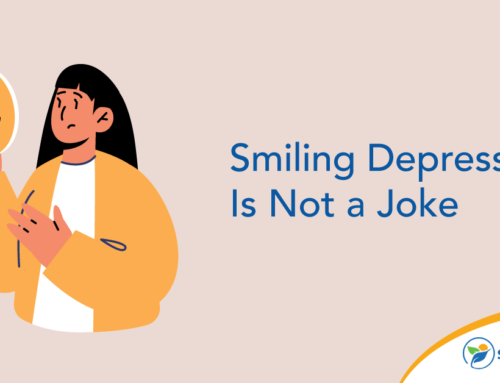If you’re taking — or considering taking — Xanax, you’ve probably wondered about the side effects of this medication. All prescription drugs come with some form of potential side effects, so hearing about side effects shouldn’t automatically turn you off from a medication. Still, Xanax can have some fairly serious side effects you’ll want to be aware of. Knowing what Xanax’s side effects are can help you be mindful of them if they start to appear so you can decide if prescription changes might be necessary.
An Introduction to Xanax: Providing an Overview of Its Purpose and Mechanism
Most people have heard of Xanax, as it’s a common prescription and often mentioned in pop culture. Xanax is the brand name of a medication called alprazolam, typically prescribed to treat anxiety and panic disorders. So, what does Xanax do? Alprazolam is a type of benzodiazepine; it enhances the effects of the natural chemical GABA in the central nervous system to produce a calming effect.
When a person takes Xanax, they might feel tired and relaxed and become quieter. For someone dealing with anxious thoughts or panic attacks, this calming effect is incredibly beneficial and can help improve overall quality of life.
Some people take Xanax recreationally and without a prescription. If taken in excessive amounts, Xanax can cause a euphoric high. However, this is dangerous, as benzodiazepines have a high risk of addiction and overdose. As a result, the federal government classifies all benzodiazepines, including Xanax, as Schedule IV controlled substances in the Controlled Substances Act.
Potential Xanax Side Effects: Exploring Common and Less Common Reactions.
As with all medications, Xanax comes with some possible side effects. Some of the common Xanax side effects are:
- Anxiety
- Ataxia (loss of muscle control)
- Blurred vision
- Changes in libido
- Cognitive dysfunction
- Constipation
- Diarrhea
- Difficulty urinating
- Dizziness
- Drastic changes in weight
- Drowsiness and fatigue
- Dysarthria (difficulty articulating words)
- Hypotension (low blood pressure)
- Insomnia
- Skin rash
- Sexual disorder
- Memory impairment
- Muscle twitching
Some of the less common side effects you should still be aware of are:
- Chest pain
- Continuing ringing or buzzing or other unexplained noise in the ears
- Decreased responsiveness
- Fast breathing with dizziness
- Ear pain or hearing loss
- Pounding heartbeat
- Feeling unusually cold
- Loss of control of the legs
- Loss of strength or energy
- Nightmares
- Numbness of the feet, hands and around the mouth
- Severe sleepiness
- Sleep talking
- Suicidal thoughts
- Voice changes or hoarseness
Short-Term vs. Long-Term Effects: Differentiating Immediate and Prolonged Reactions
Xanax is typically taken orally and is a rapid-absorption medication. This means the effects of the drug are usually felt within 30 minutes and can last up to 6 hours.
Often, individuals experience side effects from Xanax on a short-term basis. This means their side effects will last for the first couple of weeks of taking the medication as their body adjusts to the new drug.
However, individuals who take Xanax over a more extended period are at a higher risk of developing an addiction to the medication. Xanax is a highly habit-forming drug. As you take the medicine for a long time, your body begins to develop a tolerance. Most people respond by increasing their dosage to continue getting the same effects as before. This is a dangerous path to go down, as it can lead to abusing the drug in large doses and developing an addiction.
Someone who develops a tolerance to Xanax will likely experience withdrawal symptoms if they abruptly stop taking it. Some of the common withdrawal symptoms are:
- Agitation
- Anxiety
- Hallucinations
- Increased heart rate and blood pressure
- Insomnia
- Overactive reflexes
- Seizures
- Severe cravings
- Shakiness
For some, withdrawal symptoms are more severe and potentially even come with life-threatening complications. Some of the more severe Xanax withdrawal symptoms are:
- Catatonia (strange physical movements characterized by withdrawal)
- Convulsions
- Hallucinations
- Mania
- Psychosis
- Seizures
- Suicidal thoughts
To reduce the risk of life-threatening withdrawal symptoms, individuals struggling with Xanax addiction should seriously consider enrolling in a professional withdrawal and rehab program. These programs have professional medical staff on standby, ready to assist if anything dangerous happens.
Monitoring and Communication: The Importance of Discussing Side Effects With a Health Care Provider
Xanax can be a beneficial tool for treating and managing symptoms of some mental health conditions. But you shouldn’t be under the impression that you’re swapping out the symptoms of your mental health condition for the side effects of this medication.
Xanax side effects should only last — at most — a few weeks. If you find you’re experiencing side effects impacting your quality of life or lasting a long time, speak to your doctor immediately. You may need an alprazolam dosage adjustment.
And if adjusting your dose doesn’t resolve the situation, your doctor may prescribe a new medication instead. Everyone reacts to drugs differently, and Xanax may not be the best option for you.
As soon as you start taking Xanax, watch how you feel and communicate any concerning changes to your doctor.
Responsible Medication Use: Strategies for Managing Side Effects While Taking Xanax
Xanax is one of the most commonly prescribed benzodiazepines in America. Still, as showcased here, it’s a prescription drug with many potential side effects. In addition to side effects, Xanax interacts poorly with 539 known drugs and nine diseases. And Xanax shouldn’t be combined with alcohol or cannabis products.
Always clearly communicate to your doctor any medications you’re on before starting Xanax. Additionally, don’t mix your Xanax prescription with any new medicines until you consult your physician.
If you find you’re not getting the same effects from your Xanax when you take your regular dose, it could be a sign that you’re building up a tolerance. Don’t increase your dosage frequency or amount without talking to your doctor. Xanax is a highly addictive substance; you don’t want to risk developing a substance use disorder. Your doctor will talk you through your options if you’re starting to need a higher dose.
Recognizing When You Need Help
If you’re concerned that you’re already addicted to Xanax, know that recognizing the problem is the first step. Getting professional help is incredibly important for your mental and physical well-being, as an addiction to benzodiazepines can be life-threatening.
At Sunlight Recovery, we can offer you the help you need to get back to sober living. We provide medical detox programs so your withdrawal process is as painless and safe as possible. You don’t have to live with addiction any longer. Contact us today to learn how we can help you reclaim your life.







